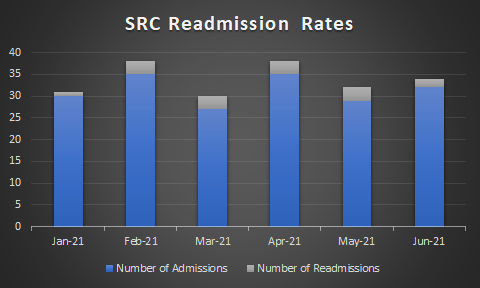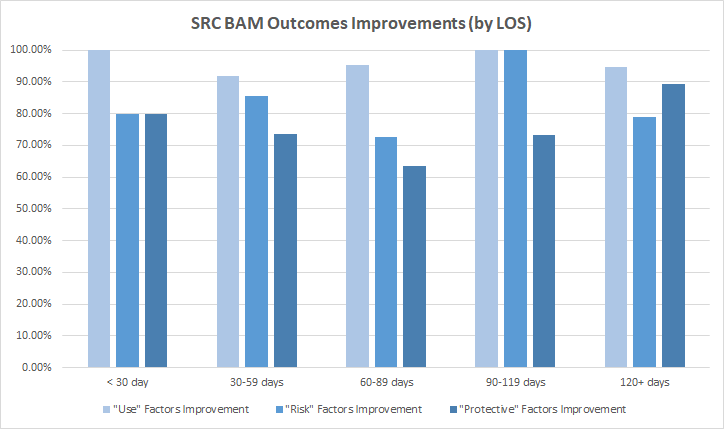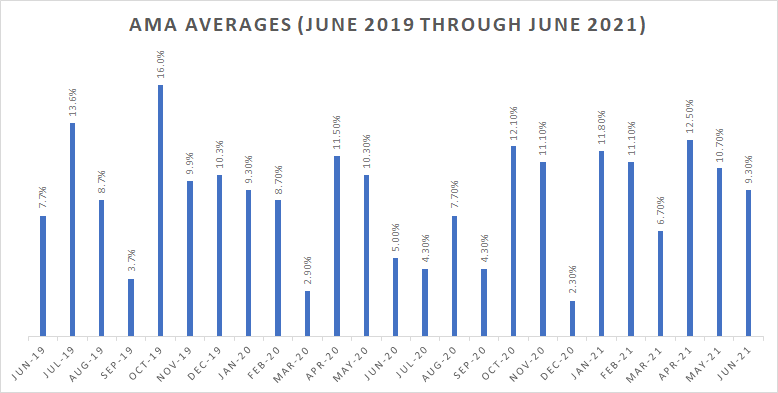Outcomes Measurements
SRC® utilizes evidence-based and Joint Commission/SAMHSA approved outcomes measurement tools to track outcomes throughout the course of treatment and post-discharge with Scottsdale Recovery. The primary tool utilized to evaluate outcomes related to substance use concerns is the Brief Addiction Monitor (BAM) Tool.


The Brief Addiction Monitor (BAM) is first administered upon admission and re-evaluated in 30-day increments throughout treatment and at discharge. Over the course of client’s engagement in treatment with SRC®, our goals are to observe Use Factors and Risk Factors decrease, while Protective Factors increase.
- For Use Factors, our clinical/medical/psychiatric team focuses on motivational interviewing, identifying higher level of care needs if clinically/medically appropriate, and/or psychopharmacology (MAT, Naltrexone, etc).
- For Risk Factors, our clinical/medical/psychiatric team focuses on medical/mental health consultation, address craving and sleep patterns with medications or coping skills on physical wellness, mood issues with medication management/CBT, family/social problems (family therapy, family workshop, couples counseling), and high-risk situation (CBT skills, refusal skills, assessing for environmental triggers, etc).
- For Protective Factors, our clinical/medical/psychiatric team focus on building sober support networks, 12-step and alumni involvement, family involvement, case management needs (for work, school, financial, legal issues, etc), and building self-efficacy by focusing in on their needs and how we build on current resiliency.
The Brief Addiction Monitor is a 17-item, multidimensional, progress-monitoring instrument for clients in treatment for a substance use disorder (SUD). The BAM includes items that assess risk factors for substance use, protective factors that support sobriety, and drug and alcohol use (items 4-7G). The BAM produces composite scores for the three aforementioned domains. The instrument can be used in treatment planning, progress monitoring, and group or individual psychotherapies for SUD. Examining scores from individual items is the most clinically relevant use of this measure. Clinicians are responsible for monitoring these items in order to attend to item-level data, as they have direct implications for treatment planning. Clinicians identify specific areas of need or resources for the client’s recovery.
Each functional domain has an associated composite score which serves as cross-sectional marker of clinical status.
-
Use = sum of Items 4, 5, & 6 (Scores from 0 to 90 on the BAM-R; higher scores meaning more Use). Item 7 (7A-7G) are not scored as part of the subscales but provide elaboration for item 6.
-
Risk = sum of Items 1, 2, 3, 8, 11, & 15 (Scores from 0 to 180 on the BAM-R; higher scores meaning more Risk).
-
Protective = Sum of Items 9, 10, 12, 13, 14, & 16 (Scores from 0 to 180 on the BAM-R; higher scores meaning more Protection). Item 17 can be used as an overall assessment of treatment progress, but is not scored on any of the specific subscales.

SRC®’s clinical team focuses on identifying trends to hit the deficits and concerning areas where clients are most impacted and how we can support clients as a clinical team and as an organization to increase the Protective Factors. For example, by reviewing our outcome data we identified an opportunity to improve our family component by implementing a Saturday group called Family Workshop (FW). We believe that based on the trends that we are seeing that this has made a significant impact on increasing Protective Factors to enhance the likelihood of clients maintaining their sobriety. The information we receive through this process helps the clinical team to adjust the curriculum, group topics, individual/family session needs, and treatment planning goals so that SRC® can focus on supporting areas of growth the clients and families are struggling with.
